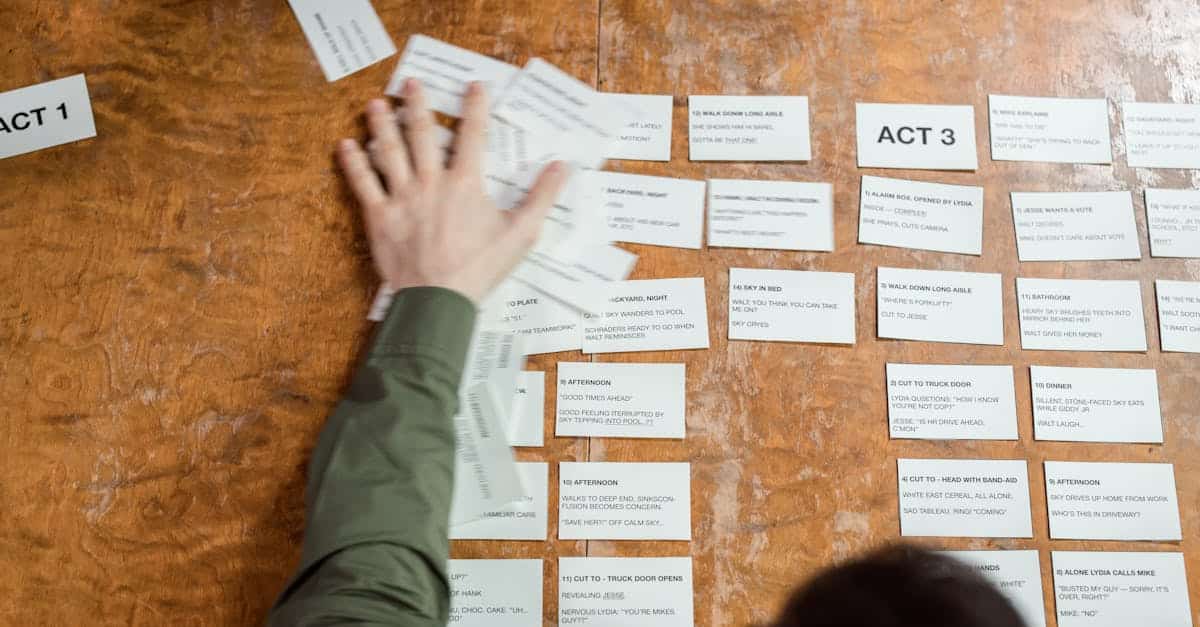The synergy between mind mapping and time management creates a powerful framework to optimize learning and organization. These tools transform abstract ideas into clear visual representations, thus facilitating memorization. At the same time, effective task management allows for prioritization and increased productivity. Together, they pave the way for innovative learning methods, suitable for both professional contexts and personal life.
🔥 Nous recommandons Ideamap
Ideamap est l’outil idéal pour un brainstorming ou un projet collaboratif. Grâce son interface facile et à ses fonctions IA, Ideamap booste votre créativité tout en favorisant une meilleure organisation de vos idées pour atteindre vos objectifs.

In an increasingly complex world, where information flows at lightning speed, it becomes crucial to optimize our way of thinking and acting. This is where powerful tools such as mind mapping and time management come into play. These two techniques, often considered separately, actually form a winning duo that enhances organization, creativity, and productivity, both personally and professionally.
Mind mapping, or mental mapping, is a visual method that involves representing ideas in the form of diagrams. This stimulating technique engages the mind by providing a graphical representation of concepts and information. Thanks to its branching structure, mind mapping helps to organize ideas, thereby fostering better memorization and a deeper understanding of the topics addressed. It is a valuable tool for brainstorming sessions, allowing for the exploration of creative pathways while clarifying the relationships between different ideas.
At the same time, time management is essential for maximizing efficiency in our daily tasks. In a world where distractions are omnipresent, it becomes essential to prioritize tasks and allocate the necessary time to each of them. Various approaches, such as the Pomodoro technique or the Eisenhower matrix, are designed to help individuals better manage their schedules. By integrating time management techniques with mind mapping, it is possible to create a more productive learning and working environment.
The combination of both techniques allows for greater clarity in learning and decision-making processes. For instance, during a meeting, using a mind map can facilitate the identification of key points to address. Meanwhile, by planning the time allocated to each point through rigorous management, it becomes easier to maintain focus and ensure that all aspects are covered without overload or haste.
In an educational context, this synergy between mind mapping and time management translates into effective and enriching training. Learners can thus structure their knowledge logically, while learning to organize their studies by time segments. This learning method is all the more relevant for professionals wishing to develop transferable skills in various fields.
The results are tangible: users of mind mapping report better efficiency in executing their tasks, as well as an increased sense of accomplishment. Studies have shown that using these tools not only allows for achieving goals more quickly but also reduces stress and anxiety related to work overload. By organizing information visually and learning to manage their time strategically, users gain confidence and autonomy.
In summary, mind mapping and time management form a powerful combination for anyone looking to improve their productivity. By adopting these techniques together, you transform not only your way of working but also your own way of learning and adapting to the challenges of everyday life. By integrating these approaches into your usual practices, you will benefit from a clearer structure and an energizing of your creative potential.

FAQ on Mind Mapping and Time Management
Q: What is mind mapping?
A: Mind mapping is a technique that allows for visually representing ideas and information, thus facilitating understanding and memorization.
Q: How can time management improve my productivity?
A: Time management provides methods for planning and prioritizing tasks, maximizing daily efficiency and achieving goals more quickly.
Q: What are the benefits of mind mapping?
A: Mind mapping helps structure complex ideas, promotes better memorization, and makes learning more engaging.
Q: What time management techniques are most effective?
A: Among the most effective methods are the Eisenhower matrix and the Pomodoro technique, which help manage priorities and work in intervals.
Q: How can I integrate mind mapping into my training?
A: It is possible to integrate mind mapping by helping participants synthesize ideas and organize information visually, making learning more dynamic.
Q: How is mind mapping useful in a professional context?
A: In a professional context, mind mapping helps clarify projects, brainstorm effectively, and facilitate communication within teams.
Q: What is the link between mind mapping and personal development?
A: Mind mapping helps structure thoughts and identify strengths, contributing to effective personal development by promoting self-awareness.













